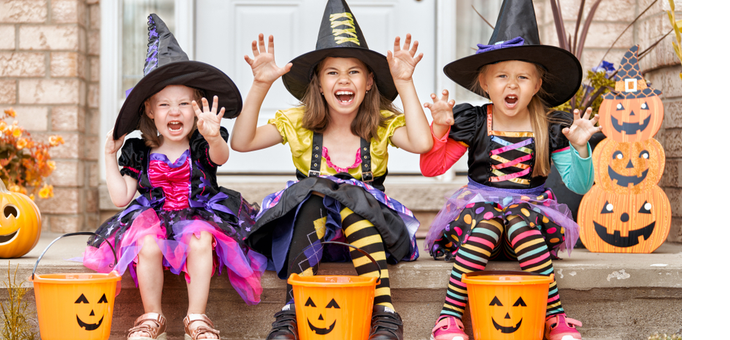Do you disapprove of the growing army of Halloween trick-or-treaters in Australia over the past decade? Do you regard the evening as a poor use of pumpkins? Yet another American tradition that should have stayed there?
Well, I did – and my husband still does – but this evening I will be heading off with a grandson – dressed as Thomas The Tank Engine – to the handful of houses in our street that put up their Halloween decorations on the weekend. I will secretly slip the householder one of the matchbox cars bought from the local op shop so that the usual basket of sweet treats is not offered. He’s 21 months and sugar-free!
Meanwhile, back at home I will have put out the dodgy skeleton I bought from a $2 shop and left a basket of sweets on the front steps. Maybe hubby will answer any knocks on the door just to tease them by saying, ‘Trick, please’. Maybe not.
I’ve changed my mind on Halloween on the basis of what happens in my street and in my local shopping strip. On Saturday, every shop was decked out in Halloween garb – lots of spiders and webs, skulls and skeletons – and most shop assistants had joined in the fun and were dressed as witches or Lurch from The Addams Family or someone creepy.
There were hundreds of kids – accompanied by parents – in full regalia, trick or treating. It was an amazing sight. They’d all gone to so much trouble and they were having a ball, meandering up the street, chatting to each other. It was a real community event.
And that’s what it has become – a community event that gets families out of their homes or units and away from TVs and smartphones. It makes them think about and prepare costumes and carve pumpkins and perform some tricks when challenged.
So for those who care, here are some facts about Halloween.
The origins date back to the ancient Celtic festival of Samhain (pronounced sow-in). The Celts, who lived 2000 years ago in Britain and parts of Europe celebrated their new year on 1 November. On 31 October, it was believed that ghosts returned to earth so people would light bonfires and wear costumes to ward them off.
The first Jack O’Lanterns were made from turnips.
According to Irish legend, Jack O’Lanterns are named after a stingy man named Jack who, because he tricked the devil several times, was forbidden entrance into both heaven and hell. He was condemned to wander the Earth, waving his lantern to lead people away from their paths.
Halloween is the second highest grossing commercial holiday in the US after Christmas.
Samhainophobia is the fear of Halloween.
Trick-or-treating evolved from the ancient Celtic tradition of putting out treats and food to placate spirits who roamed the streets at Samhain.
Halloween is short for Hallows’ Eve or Hallows’ Evening which was the evening before All Hallows or Hallowmas on 1 November.
Black and orange are typically associated with Halloween. Orange is a symbol of strength and endurance, and black is a symbol of death and darkness.
Ireland is typically believed to be the birthplace of Halloween.
Looking in a mirror at midnight on Halloween was thought to reveal a boyfriend’s face
According to tradition, if a person wears his or her clothes inside out and then walks backwards on Halloween, he or she will see a witch at midnight.
Are you for or against Halloween antics? Do you keep some treats to hand out to visitors? Do you pop out an item that indicates children are welcome to knock?
Related articles:
Halloween happenings in the US
Why I love Halloween
World’s most haunted place

